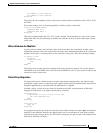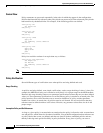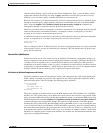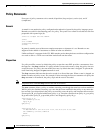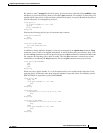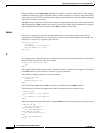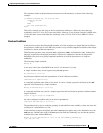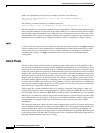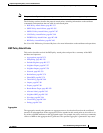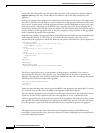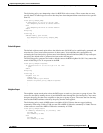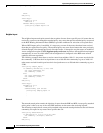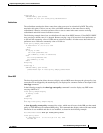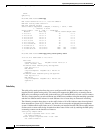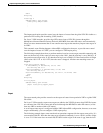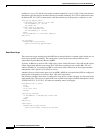
Implementing Routing Policy on Cisco IOS XR Software
Information About Implementing Routing Policy on Cisco IOS XR Software
RC-375
Cisco IOS XR Routing Configuration Guide
OL-14356-01
Note The protocol configuration rejects attempts to attach policies that perform unsupported operations.
The following sections describe the protocol attach points, including information on the attributes
(commands) and operations that are valid for each attach point.
• BGP Policy Attach Points, page RC-375
• OSPF Policy Attach Points, page RC-395
• OSPFv3 Policy Attach Points, page RC-397
• IS-IS Policy Attach Points, page RC-398
• EIGRP Policy Attach Points, page RC-400
• RIP Policy Attach Points, page RC-403
See Cisco IOS XR Routing Command Reference for more information on the attributes and operations.
BGP Policy Attach Points
This section describes each of the BGP policy attach points and provides a summary of the BGP
attributes and operators.
• Aggregation, page RC-375
• Dampening, page RC-376
• Default Originate, page RC-377
• Neighbor Export, page RC-377
• Neighbor Import, page RC-378
• Network, page RC-378
• Redistribute, page RC-379
• Show BGP, page RC-379
• Table Policy, page RC-380
• Import, page RC-381
• Export, page RC-381
• Retain Route-Target, page RC-382
• Allocate-Label, page RC-383
• Neighbor-ORF, page RC-383
• Next-hop, page RC-384
• Clear-Policy, page RC-384
• Debug, page RC-384
Aggregation
The aggregation attach point generates an aggregate route to be advertised based on the conditional
presence of subcomponents of that aggregate. Policies attached at this attach point are also able to set
any of the valid BGP attributes on the aggregated routes. For example, the policy could set a community
value or a MED on the aggregate that is generated. The specified aggregate is generated if any routes



